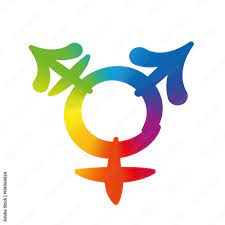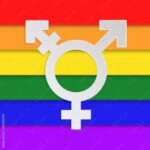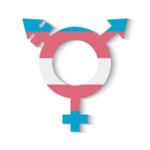In the vibrant tapestry of the LGBTQ+ community, the terms "trans" and "gay" often come up, but they represent different aspects of identity that are crucial to understand. While both groups face similar challenges and discrimination, their experiences can be quite different. Let’s dive into the nuances between being transgender and being gay, shedding light on what each identity means, the misconceptions that often surround them, and how we can all come together in support.
Understanding the Basics: Transgender vs. Gay Explained
At the core, "transgender" refers to individuals whose gender identity differs from the sex they were assigned at birth. This means that a person assigned male at birth may identify as female, or someone assigned female may identify as male. On the other hand, being "gay" primarily relates to sexual orientation, specifically referring to individuals who are attracted to members of their own gender. This means that a gay man is attracted to other men, while a gay woman (often referred to as a lesbian) is attracted to other women.Top Surgery Vs Breast Reduction
It’s essential to note that being transgender is about gender identity, while being gay is about sexual orientation. They are separate aspects of a person’s identity, but they are often intertwined, as someone can be both transgender and gay. Understanding these differences is crucial in fostering a more inclusive and empathetic society.
What Does it Mean to Be Transgender? A Quick Overview
Being transgender is about how individuals perceive themselves and how they wish to express their gender. Many trans people undergo a process of transition, which can involve social changes (like changing their name and pronouns), medical interventions (such as hormone therapy or surgeries), or both. This journey is highly personal, and not every transgender individual chooses to undergo medical transition. The key here is respect and acknowledgment of their chosen identity.
Transgender people can experience a range of challenges, including discrimination, mental health issues, and a lack of representation. The journey can be complicated, filled with both joy and struggle. It’s important to listen to trans voices and experiences to better understand their unique challenges and triumphs.
A Look at Gay Identity: More Than Just Sexual Orientation
Being gay encompasses a broad spectrum of experiences and identities, all revolving around the notion of same-sex attraction. However, the gay identity is more than just who someone loves; it also encompasses cultural, social, and political dimensions. For many, identifying as gay is tied to a sense of community and shared experiences, often leading to pride celebrations and activism.
Additionally, the journey to embracing a gay identity can be complex, often influenced by societal norms, family acceptance, and cultural backgrounds. Many gay individuals must navigate the challenges of coming out, which can be both liberating and daunting. Understanding this journey helps to foster empathy and support for the gay community.
Common Misconceptions: Trans People vs. Gay People
One of the most common misconceptions is that being transgender is merely a phase or a trend, while being gay is often dismissed as just a "choice" rather than an inherent aspect of who someone is. These misunderstandings can lead to harmful stereotypes and marginalization. For example, some might erroneously believe that a transgender woman is simply a gay man in disguise, which dismisses her real experiences and struggles as a woman.
Moreover, there’s a misconception that all trans people must undergo medical procedures to be valid in their identities. Similarly, many believe that being gay is synonymous with promiscuity or unhealthy behaviors. These stereotypes are not only false but also damaging, as they perpetuate stigma and discrimination against both transgender and gay individuals.
Intersectionality: Where Trans and Gay Identities Meet
Intersectionality plays a significant role in the lives of many individuals within the LGBTQ+ community. For instance, a transgender person can also identify as gay, or a gay person may have a gender non-conforming identity. This intersection of identities can create unique experiences and challenges, as individuals navigate societal expectations based on both their sexual orientation and their gender identity.
Understanding intersectionality helps to highlight how different aspects of identity can combine to shape one’s experience in the world. For example, a transgender woman who is gay may face discrimination not only based on her gender identity but also due to her sexual orientation, making her experience distinctly different from that of a cisgender gay man. Recognizing these intersections is crucial in advocating for more inclusive policies and practices.
The Importance of Community Support for Both Groups
Community support is vital for both transgender and gay individuals, as it provides a space for empowerment, understanding, and shared experiences. When people come together to celebrate their identities, they create a sense of belonging that can combat the isolation many face due to societal rejection. Events like pride parades and support groups are essential for fostering connections and building resilience within the community.
Furthermore, intersectional support is equally important. Recognizing that not all transgender individuals are straight, and not all gay individuals are cisgender, helps create more inclusive environments. By supporting one another, both groups can advocate more effectively for their rights and work towards a more equitable society.
Advocacy and Rights: Fighting for Trans and Gay Equality
Advocacy for both transgender and gay rights has gained momentum over the past few decades, yet there is still much work to be done. Organizations and activists are continuously working to combat discrimination, promote understanding, and push for policy changes that protect the rights of LGBTQ+ individuals. This includes fighting for healthcare access, employment protections, and anti-discrimination laws that encompass both gender identity and sexual orientation.
It’s crucial to recognize that while progress has been made, many trans and gay individuals still face systemic barriers and violence. Advocacy efforts must continue to ensure that all voices are represented and that everyone can live authentically without fear of discrimination or violence.
How to Be an Ally: Supporting Both Trans and Gay Friends
Being an ally to both transgender and gay friends involves listening, learning, and standing up against discrimination. Start by educating yourself about the challenges and experiences faced by these communities. Use inclusive language, respect individuals’ pronouns, and challenge any stereotypes or prejudices you encounter in conversations.
Additionally, support your friends by attending events, whether it’s pride celebrations, trans advocacy rallies, or educational workshops. Your presence can show solidarity and encouragement. Remember, being an ally is about amplifying voices that are often marginalized and creating an environment where everyone can feel safe and accepted.
Understanding the distinctions between transgender and gay identities is essential in fostering a more inclusive and empathetic society. Both groups have their unique challenges and experiences, but they also share common struggles and triumphs. By educating ourselves, supporting one another, and advocating for equality, we can work together to create a world where everyone, regardless of their identity, feels valued and accepted. Let’s celebrate our differences and come together as allies in this ongoing journey for justice and love!


